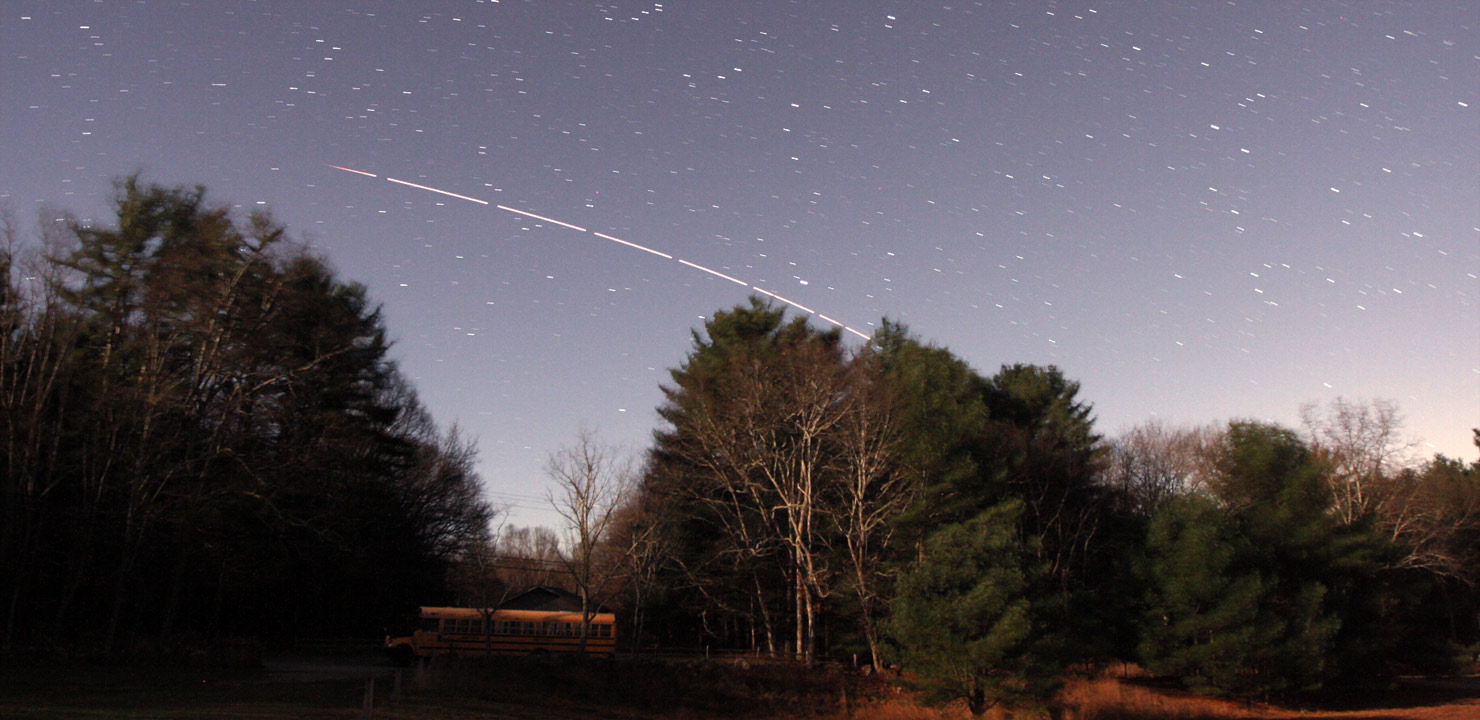
See Rocket Launches & Space Stations From Your Backyard
December 2013 :
A surprising perk to living on the East Coast lately has been the opportunity to witness resultant launches from Wallops Island, Virginia. Within the past several months, two such craft, LADEE, a lunar orbiter attempting to understand the possibility of an atmosphere surrounding our nearest neighbor, and Minotaur, crammed with over two dozen mini-satellites – Cubesats – were both observed by many of us willing to stay up late (LADEE went up at 11:27 P.M) or brave the cold (the night Minotaur was launched, temperatures were near freezing). But, for those of us who do spend some time outside, launches such as this are great ways to have our public looking for something unique.
Of course, the sky is full of many manmade objects. The International Space Station is a great sight for anyone just observing outside; also, it is easily found, as web sites such as Heavens-Above, or your facility’s Sky Chart, quickly gives not only the times these appear in the sky, but how long and how bright they will be. In addition, Iridium flares, the set of communication satellites that suddenly appear, sometimes brightening to magnitudes to rival Venus – or, in some cases, even more – there have been flares reach magnitude -8.
Introducing some of our brighter satellites is a great way to introduce these elusive bodies to the audience. All you need is a couple minutes to determine the brighter ones visible during a night. By having them able to witness “Your tax dollars at work,” you are giving your audience another reason to go outside and enjoy the night sky. And, by directing them to a web site containing a very clear path in the sky, or by making a quick chart, our audiences are now on their way to not only looking up – reinforcing what they learned from us – but also subliminally identifying the celestial objects that the satellites are both appearing near to and passing by on their paths across the sky. It’s very seldom that at least one artificial satellite can’t be seen. And, keep checking Wallops Island. There’s always a chance there will be another launch waiting for us.
Jim Hendrickson and Francine Jackson observed the Minotaur I/ORS-3 launch from Alton Jones Campus with URI Physics Professor Amer Hodzic and a group of his astronomy students on the evening of November 19.



